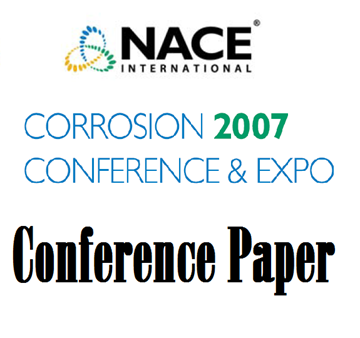Search
01117 THE INFLUENCE OF DISSOLVED HYDROGEN ON NICKEL ALLOY SCC: A WINDOW TO FUNDAMENTAL INSIGHT
Also Purchased
03675 The Effect of pH on Nickel Alloy SCC and Corrosion Performance
Product Number:
51300-03675-SG
ISBN:
03675 2003 CP
$20.00
07421 Fabricating Nickel Alloy Products to Avoid Stress Relaxation Cracking
Product Number:
51300-07421-SG
ISBN:
07421 2007 CP
Publication Date:
2007
$20.00
99447 INFLUENCE OF DISSOLVED HYDROGEN ON NICKEL ALLOY SCC IN HIGH TEMPERATURE WATER
Product Number:
51300-99447-SG
ISBN:
99447 1999 CP
$20.00




